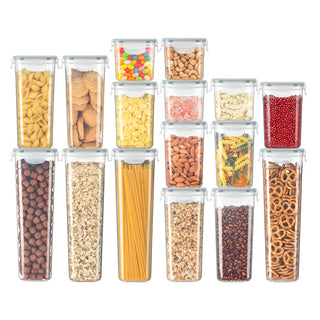Storing food storage containers efficiently can save you a lot of kitchen space and keep things organized. Here’s a simple guide to help you store your food storage containers in a way that's tidy and practical:
1. Sort by Shape and Size
Start by grouping your containers by shape and size. This will make it easier to stack them and see what you have at a glance. Keep similar shapes together, like all square containers in one area and round containers in another.
2. Nest Containers
Most food storage containers are designed to nest within each other. Take advantage of this feature by placing smaller containers into larger ones. This nesting technique maximizes space and reduces the footprint of your storage area.
3. Stack Lids Separately
Lids can be a tricky part of container storage. Try to store them upright in a separate bin or a plate rack. This keeps them organized and easy to grab. Ensure the lids are sorted by size or container type, which helps in quickly finding the right lid for the right container.
4. Use Clear Bins or Drawers
If you have multiple types and sizes of containers, using clear bins or drawer organizers can be a game-changer. This way, you can pull out the entire bin or drawer to easily access the container you need without disrupting the whole cabinet.
5. Label Containers
For those who love organization, labeling containers and their corresponding lids can save time. You can use simple stickers or a label maker to mark containers based on their size or usage (like "leftovers", "snacks", etc.).
6. Keep a Consistent Home
Decide on a specific cabinet, drawer, or shelf to be the home for your storage containers. Consistently returning them to this spot will keep your kitchen organized and prevent containers from ending up all over the place.
7. Downsize Your Collection
If you find you have too many containers, or many without matches, it might be time to declutter. Recycle or repurpose containers without lids, and donate excess containers that you rarely use.
8. Regularly Reassess Your Needs
As your household needs change, so might your need for different containers. Every few months, take a look at your collection and adjust as necessary. This can involve switching out sizes, shapes, or even upgrading to newer models that stack better.
By following these tips, you can keep your food storage containers neatly organized and easily accessible, making meal prep and food storage a breeze. This simple organization can save you time and frustration, making your kitchen a more functional and enjoyable space.

